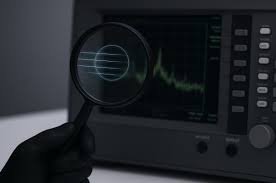In an age where surveillance devices are becoming smaller and more discreet, protecting your personal and professional privacy has never been more critical. Whether you’re a business executive, a government official, or just a private citizen concerned about eavesdropping, a bug sweeper offers a powerful solution to detect and eliminate hidden surveillance threats. This article explores everything you need to know about bug sweepers—what they are, how they work, and why they’re an essential tool for modern security.
What is a Bug Sweeper?
A bug sweeper is a specialized electronic device used to detect and locate hidden surveillance equipment, such as audio recorders, video cameras, GPS trackers, and wireless transmitters. These devices work by scanning for radio frequencies (RF), infrared signals, magnetic fields, or even lens reflections that may be emitted by spying equipment. The term “bug” refers to hidden listening or recording devices that are often planted covertly to gather unauthorized information.
From corporate espionage to personal privacy breaches, the risks are very real—and a bug sweeper acts as your first line of defense against them.
How Does a Bug Sweeper Work?
Bug sweepers operate by scanning an environment—usually a room, vehicle, or office—for telltale signs of hidden electronic devices. Most modern bug sweepers offer multiple detection modes, such as:
- RF detection to locate devices that transmit signals.
- Infrared detection to identify hidden cameras.
- Magnetic detection to find GPS trackers and magnetic bugs.
- Acoustic sensors to detect ultrasonic signals or audio anomalies.
Some advanced models even include audio amplification or smartphone integration for real-time detection results. Regardless of the model, the basic function remains the same: alerting you to potential threats so you can take action before your privacy is compromised.
Who Needs a Bug Sweeper?
You might think that only spies or high-profile celebrities need a bug sweeper, but the reality is quite different. In today’s interconnected world, anyone can become a target of surveillance.
Business owners often use bug sweepers to ensure that meetings remain confidential, particularly when dealing with sensitive financial data or proprietary information. Lawyers and journalists use them to protect client or source confidentiality. Even landlords, Airbnb hosts, and concerned homeowners are now investing in bug sweepers to ensure that their spaces are not being secretly monitored.
In domestic situations, individuals may use a bug sweeper to check for surveillance in relationships where trust has been broken. With increasing cases of cyberstalking and harassment, it’s no longer paranoia—it’s smart prevention.
Why Bug Sweepers Are More Important Than Ever
The rise in affordable surveillance gadgets available online has made it easier for anyone to buy and deploy hidden cameras or recording devices. Miniature audio bugs can be hidden in electrical outlets, clocks, smoke detectors, or even everyday items like pens or USB drives. And thanks to wireless technology, many of these bugs can transmit real-time data without being easily detected.
That’s why a bug sweeper has become a vital tool in the modern security toolkit. With one in hand, you can regularly scan your surroundings and rest assured that your privacy remains intact. Whether you’re staying in a hotel, renting a car, or working from a shared office space, a bug sweeper can help you detect threats before they become a serious problem.
How to Choose the Right Bug Sweeper
Not all bug sweepers are created equal. Depending on your needs, you might require a basic handheld model or a more advanced professional-grade unit. When choosing a bug sweeper, consider the following:
- Frequency range: A broader range means better detection of various devices.
- Sensitivity levels: Adjustable sensitivity helps pinpoint the exact location of a bug.
- Portability: Choose a compact model for ease of use during travel.
- Battery life: Longer battery life allows for extended scanning sessions.
- Display and alerts: Models with clear screens and audio/visual alerts improve usability.
While basic models can start at a relatively low cost, high-end bug sweepers used by professionals may run into the hundreds or thousands of dollars. However, the investment is often worth the peace of mind it brings.
Using a Bug Sweeper Effectively
To use a bug sweeper effectively, slowly walk around the area you wish to scan while keeping an eye on the device’s indicator for any unusual activity. Pay special attention to power outlets, light fixtures, vents, and furniture—places where bugs are often concealed.
It’s also wise to scan electronic devices like computers, routers, and smart TVs, as they can be compromised. If your bug sweeper shows consistent signals in a specific location, conduct a physical inspection or consult a professional security expert.
Final Thoughts
In an era of ever-evolving digital threats, taking proactive steps to safeguard your privacy is not just an option—it’s a necessity. Whether you’re concerned about corporate espionage, stalkers, or hidden surveillance in hotels or homes, a bug sweeper is an effective and reliable tool to maintain control over your personal space.
With regular use and the right equipment, you can identify threats before they cause damage and stay one step ahead of those who seek to invade your privacy. If you haven’t already considered adding a bug sweeper to your security plan, now is the time to act.







